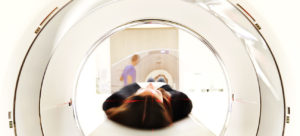When you’re thinking about Snellville MRI options, you might also be wondering what the difference is between an MRI and the traditional X-ray.
Here is a breakdown:
X-Ray
 The X-ray is well known to produce 2D images of broken bones and some surrounding soft tissue. While the procedure only takes a matter of seconds, the X-rays themselves are a powerful force that can hurt human tissue.
The X-ray is well known to produce 2D images of broken bones and some surrounding soft tissue. While the procedure only takes a matter of seconds, the X-rays themselves are a powerful force that can hurt human tissue.
The interesting part is this wasn’t always known, and when X-ray technology first developed, it was made available in surprising forms you’ll never see today. Imagine walking into the shoe store and encountering the fluoroscope, which allowed you to get an x-ray of your feet to size your shoes.
That was done from the 1920’s all the way to the 1970’s. In the United States 10,000 of these machines were in use before official concern about their continued use became vogue, and despite that we had learned back in the late 1940’s that damage could be caused by radiation exposure in the wake of the atomic bomb.
A chest X-ray will unleash 0.1 mSv or millisieverts, which is the measurement of ionizing radiation (and ionizing radiation is the radiation that removes electrons from atoms.) 0.1 mSv is the equivalent of the amount of radiation most people are exposed to naturally in around 10 days. A mammogram will reach 0.4 mSv, delivering about 40 days worth of radiation. In a year, the average person gets 3 mSv of radiation exposure.
Compare this to a CAT scan, which can release up to 10 mSv per scan. Better than smoking a pack a day. That gives you 53 mSv per year.
The X-ray is mainly used to see issues in the bones, and to highlight differences between the bones and surrounding soft tissue.
MRI
 The MRI is a much more sophisticated machine, which also doesn’t use X-rays, but rather magnets that switch on and off quickly. There is much less concern for ill health effects when using the MRI compared to the X-ray.
The MRI is a much more sophisticated machine, which also doesn’t use X-rays, but rather magnets that switch on and off quickly. There is much less concern for ill health effects when using the MRI compared to the X-ray.
Additionally, the MRI has two large benefits over X-ray.
- The MRI can get images of soft tissue and compare soft tissues, and the X-ray cannot.
- The MRI can get 3 dimensional images, which doctors can reconstruct to see more precisely what is happening in the patient.
The only somewhat painful procedure is MR arthrography, an MRI scan that allows doctors to see where damage is in the shoulder through a dye that is injected into the joint. As the dye is injected there can be some pain, however anesthetic is given first. Later, a feeling of puffiness in the shoulder may remain and will subside after two or three days.
One drawback of MRI for bones are that they provide less detail than the X-ray. However, they are hugely more expensive. While the X-ray may cost about $70 dollars. The MRI can cost between $1,200 and $4,000 dollars when images are taken with contrast.
Getting to the Machine
Because of the versatility of the MRI, it’s used to assess many concerns within the body. However, because of its great expense, it’s more difficult to access than the X-ray, which you’ll find in a many doctor’s offices.
How Long It Takes
The X-ray is easier to use than the MRI, and an imaging takes just seconds, plus developing. The MRI can take between 15 minutes and an hour to complete it’s 3D image of one part of the body.
